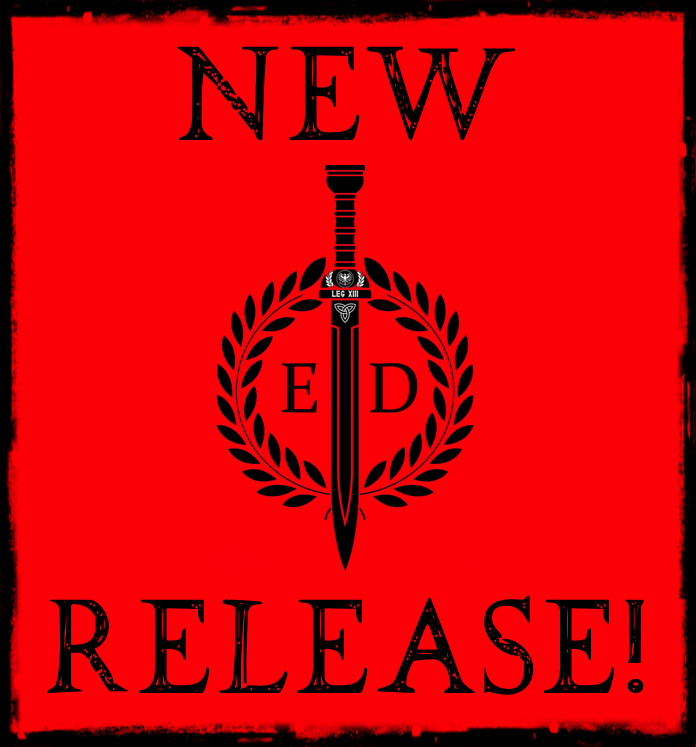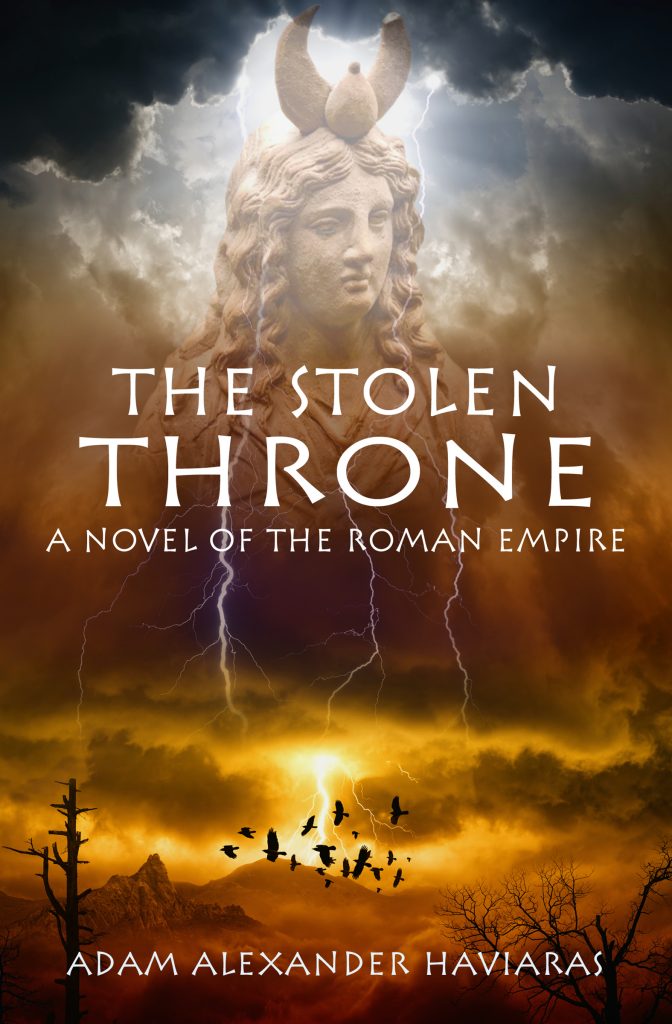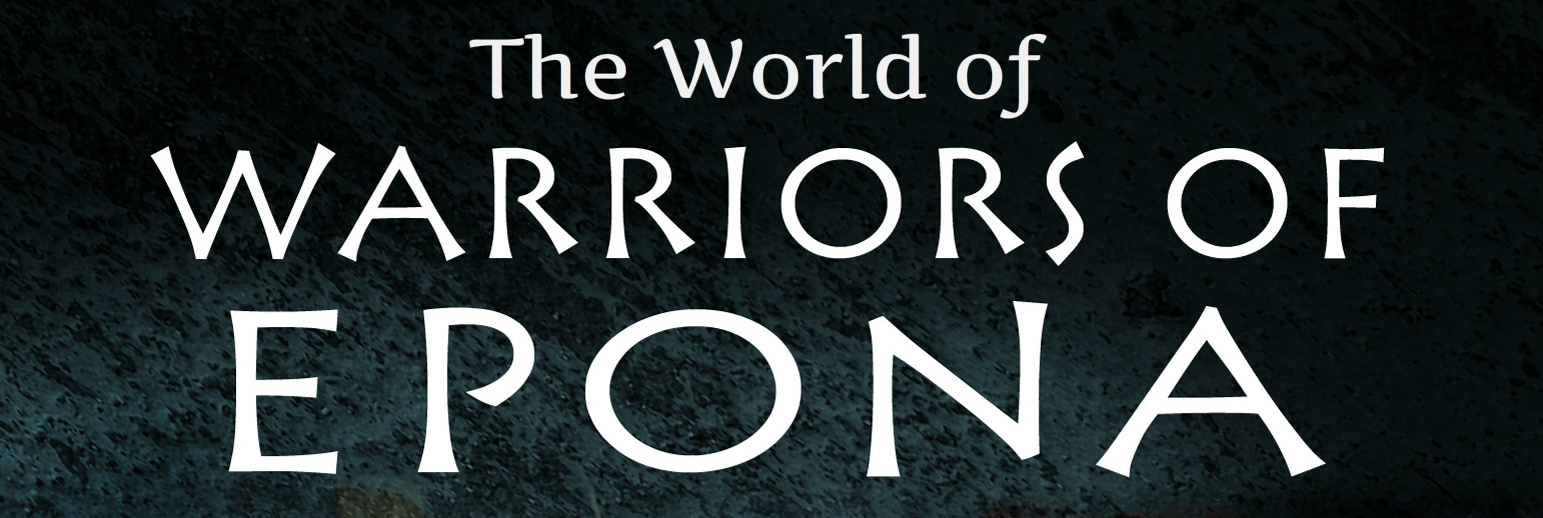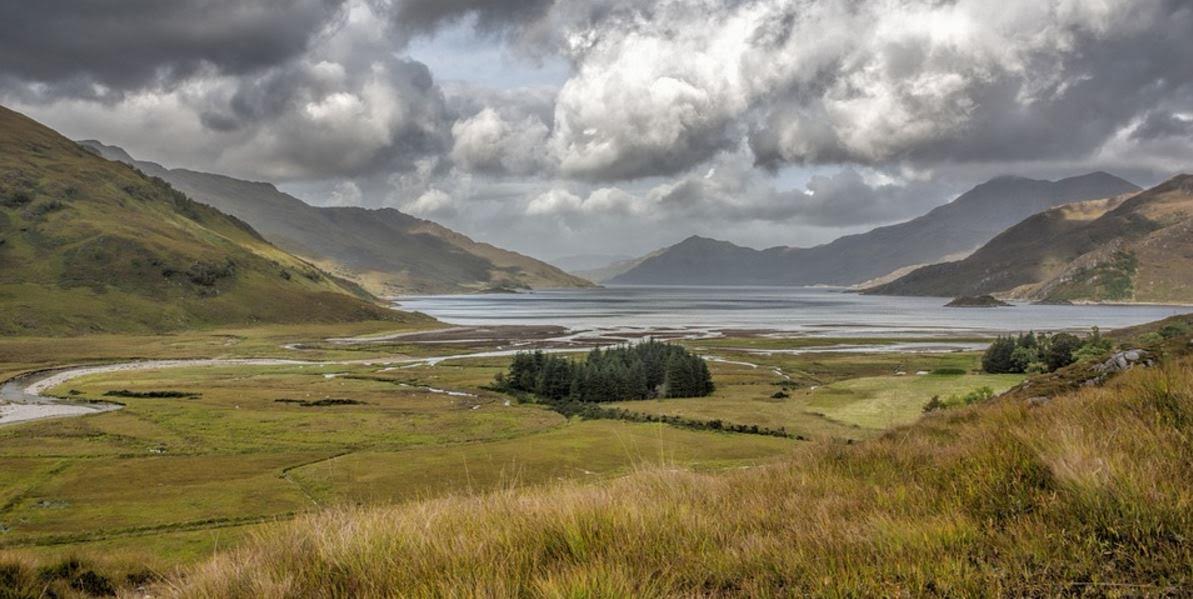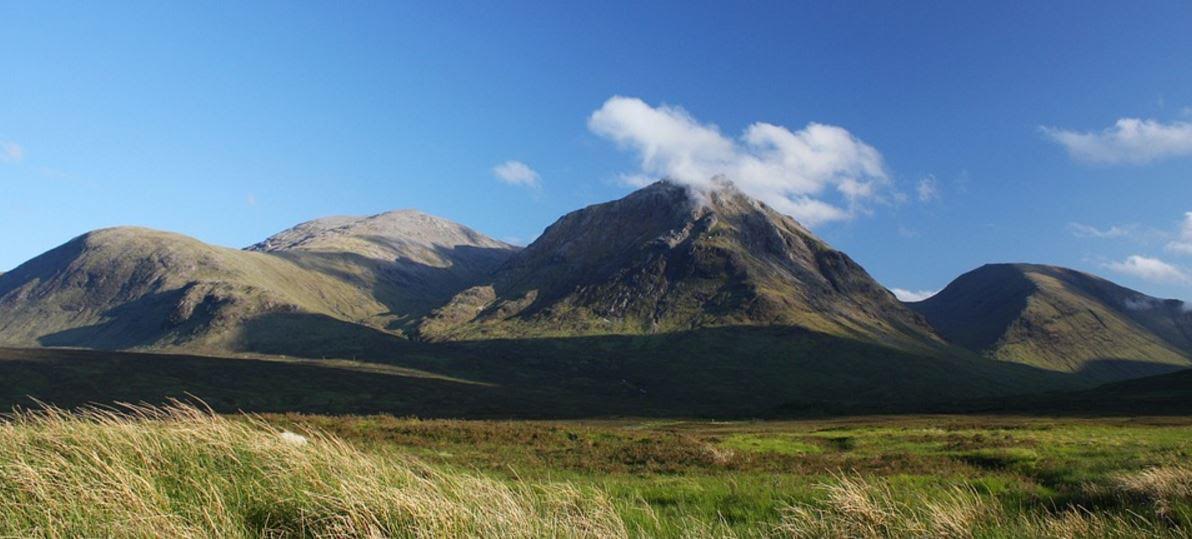Eagles and Dragon series
The World of Warriors of Epona – Part V – Legions in the North: The Romans in Scotland
Warriors of Epona is set against the backdrop of the Severan invasion of Caledonia (modern Scotland). It was a massive campaign, and Rome’s last major attempt at subduing the tribes north of the Antonine Wall.
However, this was not the first time Rome had attempted to invade Caledonia. In fact, Septimius Severus’ legions were using the infrastructure of previous campaigns into this wild, northern frontier.
In this fifth and final part of The World of Warriors of Epona, we’re going to look briefly at the Roman actions in Caledonia prior to and including the campaigns of Emperor Septimius Severus.
The full scale conquest of Britannia was undertaken in A.D. 43 under Emperor Claudius, with General Aulus Plautius leading the legions. Campaigns against the British tribes continued under Claudius’ successor, Nero in A.D. 68.
The conquest of the South of Britain involved overcoming the tribes, including Boudicca and the Iceni, the Catuvellauni, the Durotriges, the Brigantes, and others, and the attempted extermination of the Druids on the Isle of Anglesey.
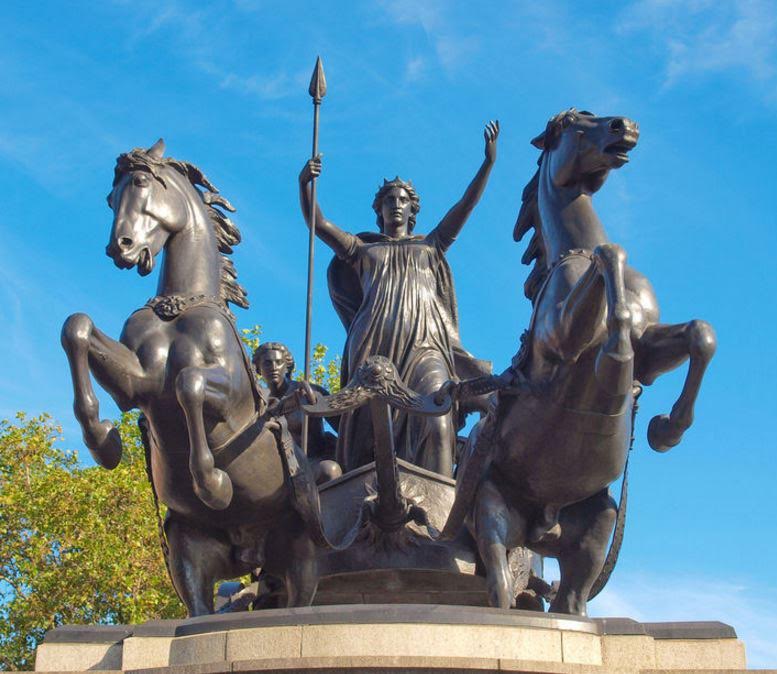
Boudicca
Eventually, after much blood and slaughter, the South was subdued, and the Pax Romana began to take root in that part of Britannia. (It pains me to gloss over so large a part of the history of Roman Britain, but we’re talking about Caledonia here…)
It was not until A.D. 71 that Rome decided it was time to invade Caledonia, and the man assigned this task was Quintus Petillius Cerialis, a veteran of the Boudiccan Revolt, and governor of Britannia at that time.
Once Cerialis’ legions were able to break through the Brigantes, it was time to press north into Caledonia.
The person who is most associated with these initial campaigns in Caledonia is none other than Gnaeus Julius Agricola, who had served in the campaigns against Boudicca in the South and who was also governor of Britannia from A.D. 77-85.

Agricola – Statue at Roman Baths, Bath, England
In around A.D. 80, Emperor Titus (A.D.79-81) ordered Governor Agricola to begin the campaigns into Caledonia by consolidating all of the lands south of the Forth-Clyde (roughly between Edinburgh and Glasgow). This involved taking on the tribes of the Borders, including the Selgovae, Maeatae, Novantae, and Damnonii.
It is in during this campaign that the fort at Trimontium, and many others were established in the Borders.
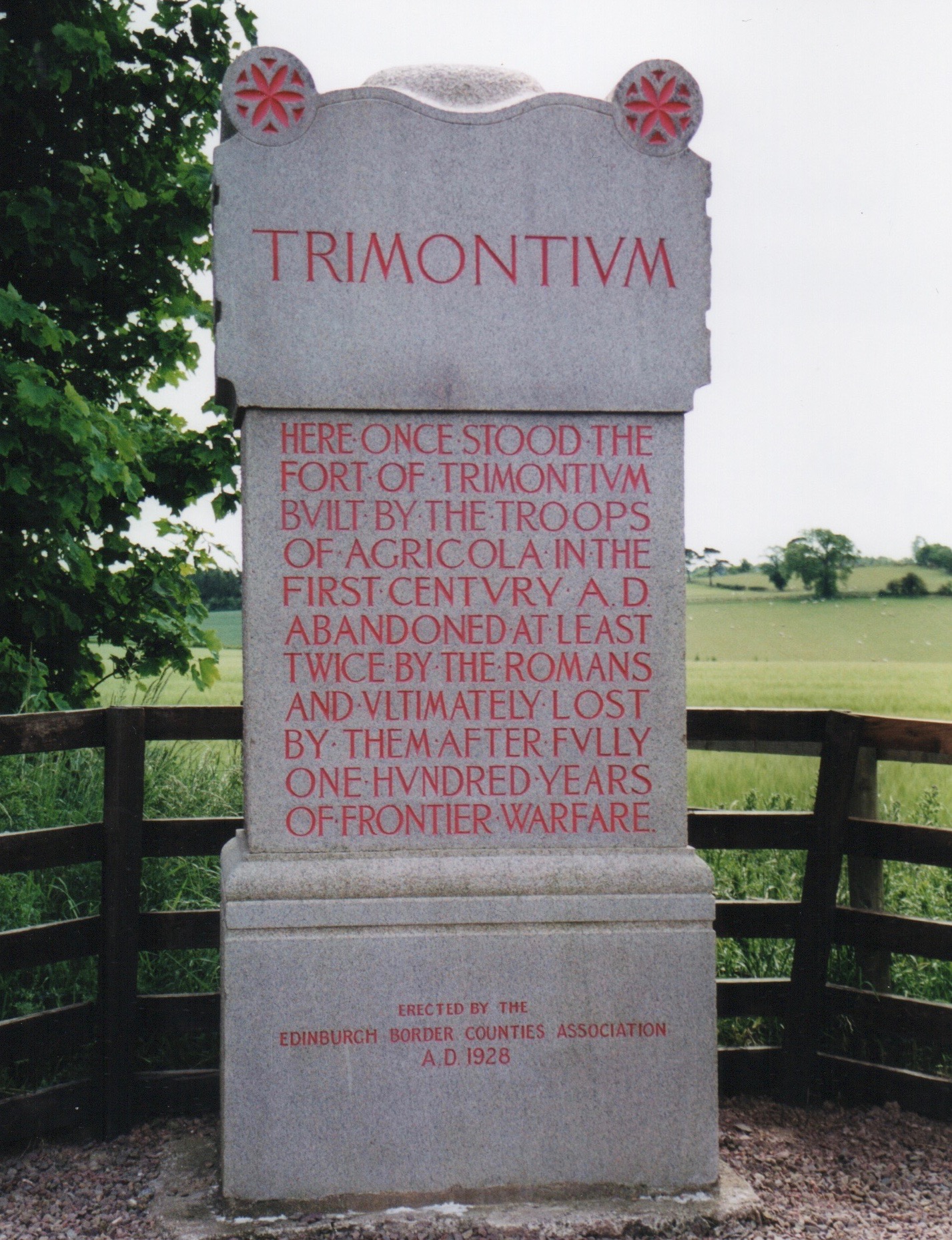
Commemorative stone at Newstead, in the Scottish Borders
By A.D. 81, Emperor Domitian had decided to order Agricola and his legions into Caledonia, and within two years, Agricola is said to have brought the Caledonians to their knees at the Battle of Mons Graupius.
He [Agricola] sent his fleet ahead to plunder at various points and thus spread uncertainty and terror, and, with an army marching light, which he had reinforced with the bravest of the Britons and those whose loyalty had been proved during a long peace, reached the Graupian Mountain, which he found occupied by the enemy. The Britons were, in fact, undaunted by the loss of the previous battle, and welcomed the choice between revenge and enslavement. They had realized at last that common action was needed to meet the common danger, and had sent round embassies and drawn up treaties to rally the full force of all their states. (Tacitus, Agricola; XXIX)
The Roman historian, Tacitus, was actually Agricola’s son-in-law, and his account, De vita et moribus Iulii Agricolae, provides us with the best first-hand account of Agricola and his invasion of Caledonia.
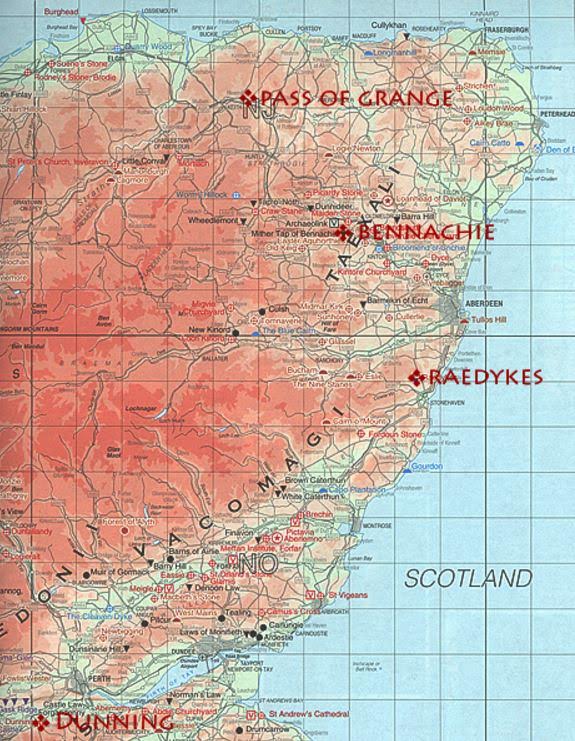
Possible locations for Battle of Mons Graupius
This is a time of legions exploring the unknown reaches of the Empire.
Sadly, the battlefield for Mons Graupius has not been identified, though there are certain candidates.
What is fortunate, however, is that Agricola’s legions left a long train of breadcrumbs in the form of marching camps, legionary bases, watch towers and of course, roads, all the way to northern Scotland.
And it is network of war that was to be used in later invasions of Caledonia.

Early Roman campaigns in Caledonia
War broke out again on the Danube frontier at this time, and so Roman man-power was sucked out of Britannia and Caledonia to meet threats elsewhere in the Empire.
And so, the legions in Caledonia went into a period of retrenchment and pulled back to the Forth-Clyde by A.D. 87.
By the time of Emperor Trajan’s reign, c. A.D. 99, Rome had retreated farther to the South to the Tyne-Solway, the future line of Hadrian’s Wall, construction of which began in A.D. 122.
The Caledonian lands for which Agricola and his legions had fought, had been given up for the time being.
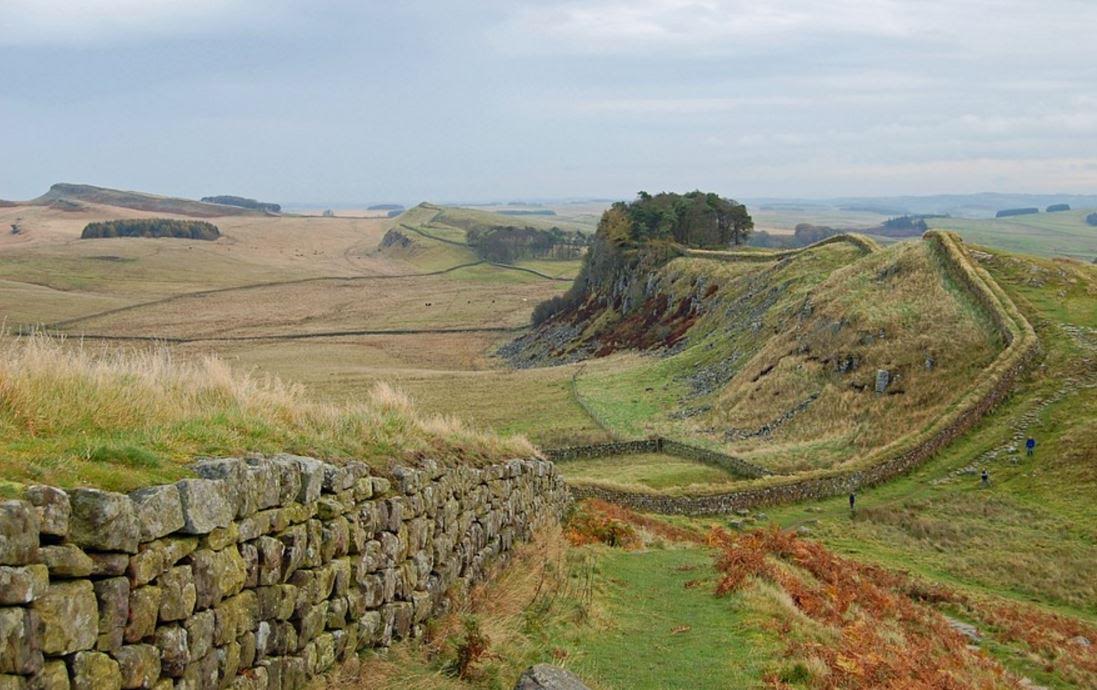
Hadrian’s Wall
As was the case for centuries to come, the lands between the Forth-Clyde line, and the Tyne-Solway line, the area known today as the Scottish Borders, went into a period of push and pull, of occupation, retreat, and re-occupation.
It was during the reign of Antoninus Pius (A.D. 138-161) that it was deemed necessary to re-occupy the lands lost during the Flavian period, and so the army advanced again across the borders, using those same roads and forts that had been constructed by Agricola, and constructing new ones.
Twenty years after construction began on Hadrian’s Wall, Antoninus Pius ordered the construction of a new wall in Caledonia itelf in A.D. 142. This was the Antonine Wall, and it’s earth and timber ramparts ran the width of Caledonia from the Forth to the Clyde in an attempt to hem the raucous tribes in on their highlands.
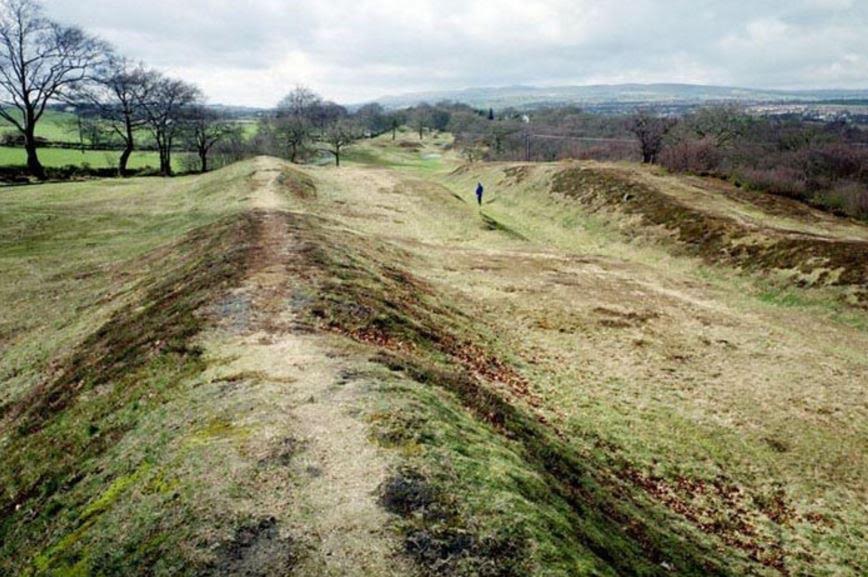
The Antonine Wall
But, after more campaigning and entrenchment by Rome, the Antonine Wall was abandoned during the reign of Marcus Aurelius in around A.D. 163.
A few outposts remained in use to the north of Hadrian’s Wall, but for the most part, the bones of the Empire were left to rot and be overwhelmed by the Caledonians and their allies.
For the next forty years, the northern tribes became a menace, breaking through the frontier defences twice, once during the reign of Commodus (c. A.D. 184) and then again during the early part of Septimius Severus’ reign in A.D. 197.
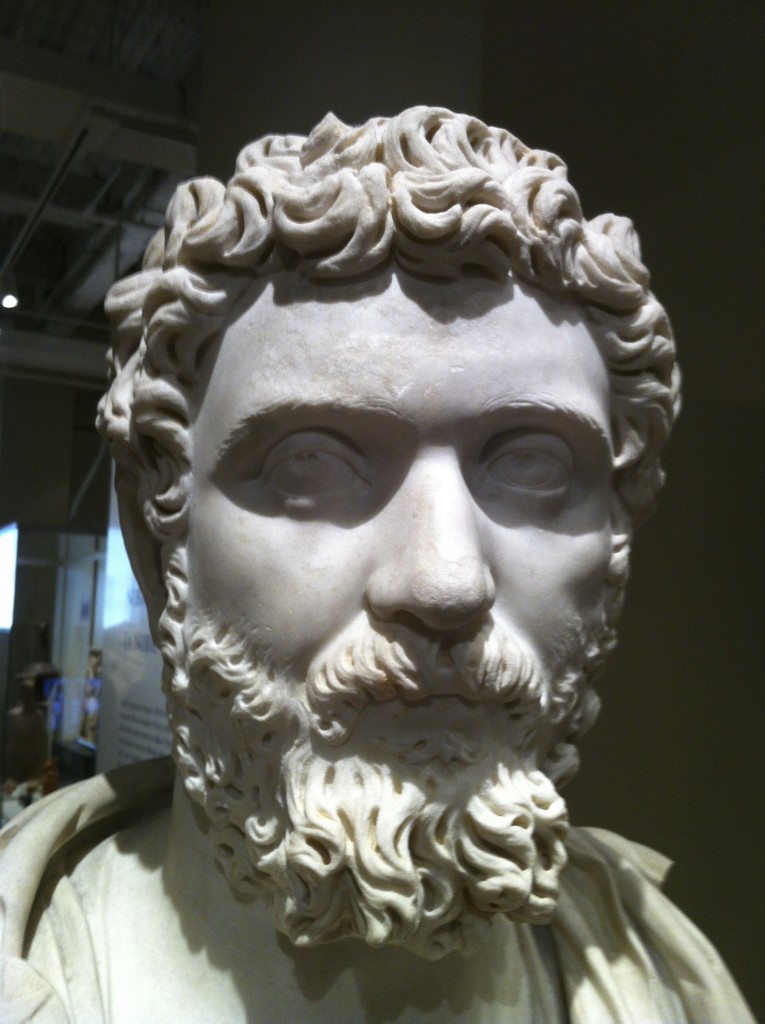
Septimius Severus
When Septimius Severus took the imperial throne, he was immediately engaged in consolidating the Empire after the civil war, and then taking on the Parthian Empire. He was a military emperor, and he knew how to keep his troops busy, and how to reward them.
The Caledonians had been a thorn in Rome’s side for a long while at that time, but it was not until A.D. 208 that Severus was finally able to deal with them. And so, the imperial army moved to northern Britannia, poised to take on the Caledonians once again.
We’ve already touched on Severus’ campaign in previous parts of this blog series. However, it’s important to note that this is believed to be the last real attempt by Rome to take a full army into the heart of barbarian territory.
Severus moved on the Caledonians with the greatest land force in the history of Roman Britain, making use of his predecessors’ fortifications (such as the Gask Ridge frontier) and roads, and penetrating almost as far as Agricola’s legions over a hundred years before.
According to Cassius Dio, when the inhabitants of the island revolted a second time, Severus:
…summoned the soldiers and ordered them to invade the rebels’ country, killing everybody they met; and he quoted these words: ‘Let no one escape sheer destruction, No one our hands, not even the babe in the womb of the mother, If it be male; let it nevertheless not escape sheer destruction.
Rome was poised for a final push, and ultimate victory over the Caledonians.
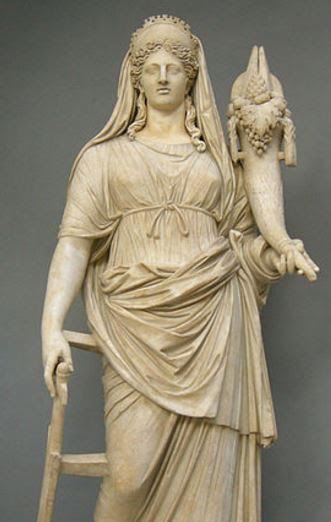
Goddess Fortuna
But Fortuna was not on Severus’ side, for it was at that time that his chronic health problems finally got the better of him.
In A.D. 211, the man who had won a brutal civil war, and who had finally brought the Parthians to heel, died at Eburacum (modern York) in Britannia.
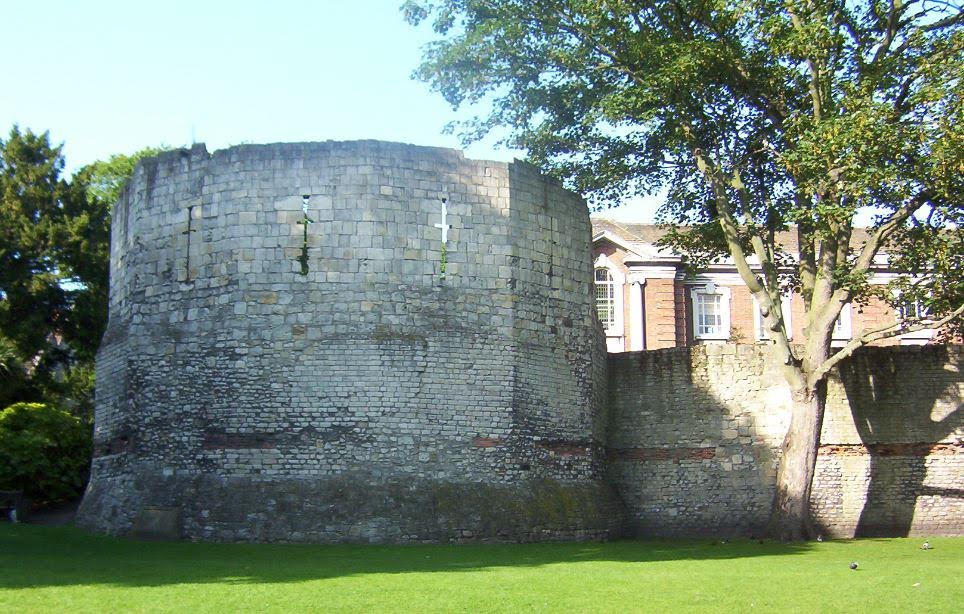
Roman Tower at Eburacum (York)
His son, Caracalla, who was ill-equipped to handle the situation, struck a deal with the Caledonians, abandoning all the headway his father had made in that northern land, and all of the blood shed by fifty-thousand Romans in the Severan campaign.
What happened after the death of Severus is for another story (i.e. for the next book!). However the Severan conquests in Caledonia did usher in a fleeting period of tranquility.
Later expeditions into the North were mounted in c. A.D. 296 by Constantius Chlorus, and by his son, the future Emperor Constantine, in A.D. 306. However, neither of these campaigns were on a scale comparable to the Severan campaign.
Like other remote corners of the Empire, Caledonia must have seemed like a lost cause.
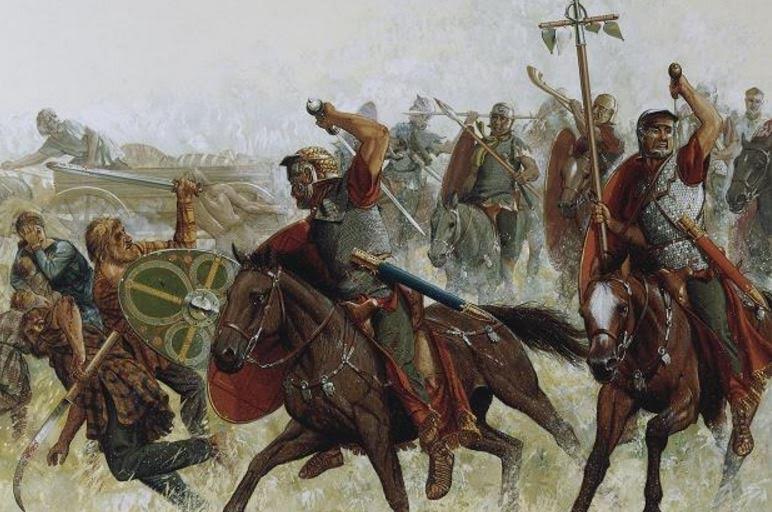
Roman Cavalry
But the Eagles and Dragons series is not yet finished with this exciting period of history in Roman Britain. Like Severus, we are poised for a final punitive push into the Highlands.
It’s a fascinating period in Roman history, and I hope you have enjoyed this journey through The World of Warriors of Epona with me. If you missed any of the previous blog posts in this series, you can read them all on one page by CLICKING HERE.
If you would like to learn a bit more about the Romans in Scotland, I highly recommend checking out the documentary Scotland: Rome’s Final Frontier with Dr. Fraser Hunter.
Warriors of Epona is out now on Amazon, Apple iBooks/iTunes, and Kobo, so be sure to get your copy today.
Remember, if you haven’t yet read any of the Eagles and Dragons novels, and if you want to get stuck in, you can start with the #1 Best Selling prequel novel, A Dragon among the Eagles. It’s a FREE DOWNLOAD on Amazon, Apple iTunes/iBooks, and Kobo.
Thank you for reading!
The World of A Dragon among the Eagles – Part II – The Imperial Roman Legion
The world in which A Dragon among the Eagles takes place, and with which the main characters are concerned, is also the world of the Roman legion.
Indeed, the imperial Roman legion figures largely in the entire Eagles and Dragon series, and so, I thought it good to do a brief introduction of the make-up of the legion at the time the book begins in A.D. 197.
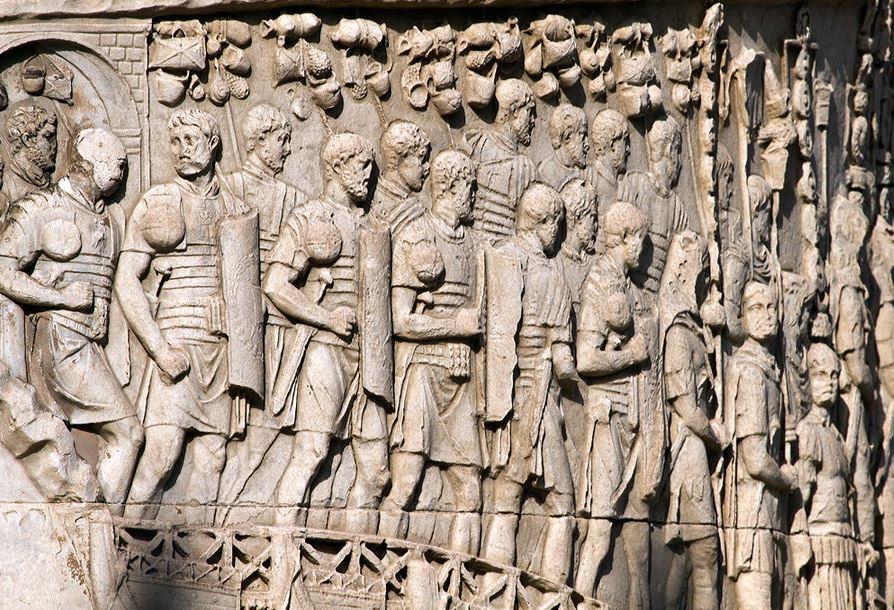
Roman legionaries on Trajan’s column
At this time in the history of the Roman Empire, the Roman legion is a well-oiled machine. It, and its troops, had been perfected after centuries of warfare, of trial and error, victory and defeat.
This army, the army of the Principate, is quite different from that of the Republic. It used to be that Roman legionaries were required to meet minimum requirements of possession and wealth in order to qualify for service in the ranks.
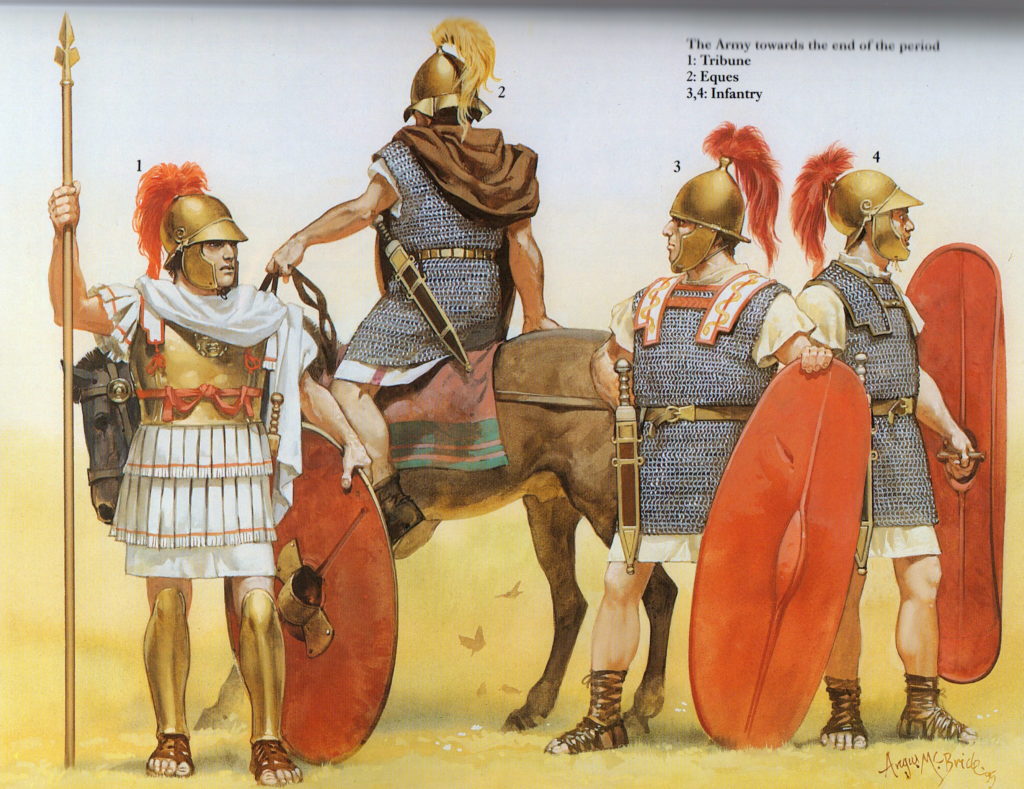
Republican Roman troops (illustration by Angus McBride)
This all changed in 107 B.C when Caius Marius was elected consul and sent to Numidia to continue the war there. However, Marius was denied the right to raise new legions in Africa, permitted only to take volunteers with him.
Of course, Marius took advantage of this, and in a move no other had taken, he appealed to the poorest classes of citizens who became known as the capite censi.
These ‘head count’ citizens were enthusiastic about joining the legions and the new opportunity for a livelihood that it presented them with. They became the backbone of the Roman Legion, and from that time onward the link between military service and property was done away with. They need only have been citizens.
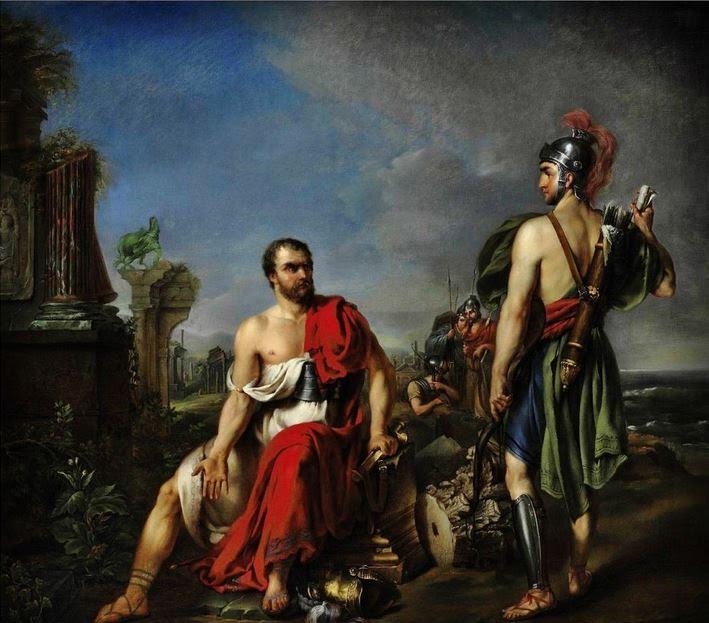
Gaius Marius among the ruins of Carthage (Joseph Verner 18th century)
Marius made many reforms to the Roman army which I won’t go into here, however, his move contributed to the creation of a permanent, full-time citizen army, a self-sufficient fighting force of well-trained men with standard-issue equipment, food and lodging. They carried everything they needed on the march on their own backs, including weapons, spikes for palisades, pots, pans, and pick-axes for digging fortifications.
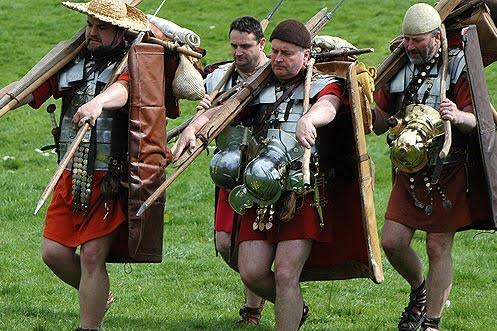
Marius’ Mules – Re-enactors marching in full kit
Because of all the kit they carried in the field, they became known as ‘Marius’ Mules’.
The average kit for a rank-and-file soldier in the imperial legions included hobnail sandals known as caligae, a standard tunic, a leather belt or cingulum, a lorica segmentata which was a breast plate made up of individual iron strips, a helmet, cloak, gladius (short sword), pugio (dagger), a pilum (javelin), and a scutum (shield).
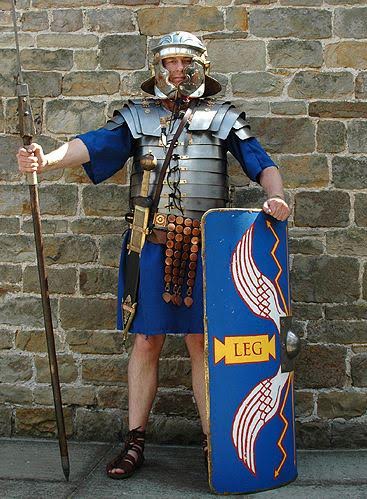
Re-enactor in Roman Legionary outfit
In A Dragon among the Eagles, there is mention of the various ranks and units that make up the legion, so I think it a good idea to cover the basics now.
The smallest unit of men in the imperial legion was a contubernium which consisted of eight men who shared a tent, or barrack room. These men marched, fought, lived, and cooked together.
Then there was the century. This is probably the most well-known unit of men. It consisted of 10 contubernia, and was run by a centurion with a standard bearer and an optio beneath him.
The centurion was usually a career soldier, and a harsh task-master. He wore different armour that was chain mail, usually with a harness decorated with phalerae, decorative discs that represented awards he had been given. The crest of a centurion’s helmet was horizontal, and he carried a short wooden staff called a vinerod, which gave him the right to strike his citizen soldiers in the interests of discipline.
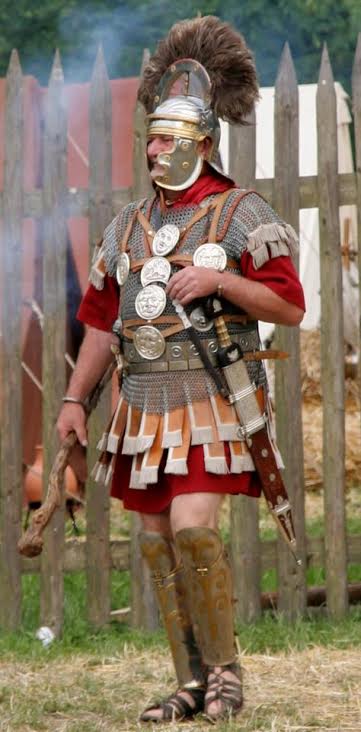
Re-enactor dressed as a Centurion (Wikimedia Commons)
There are stories about a particular centurion in the imperial legions whose nick-name was ‘give me another’ because he was constantly breaking his vinerod over the backs of his men!
Centuries of eighty men were the most flexible military units in the legion. They numbered enough to go on patrol, or building duty, and could manoeuvre effectively in battle.
Now, the next unit of the legion was the cohort.
The imperial cohort was made up of 480 men, and consisted of six centuries let by an Equestrian tribune. The first cohort of a legion, however, was led by a Patrician tribune.
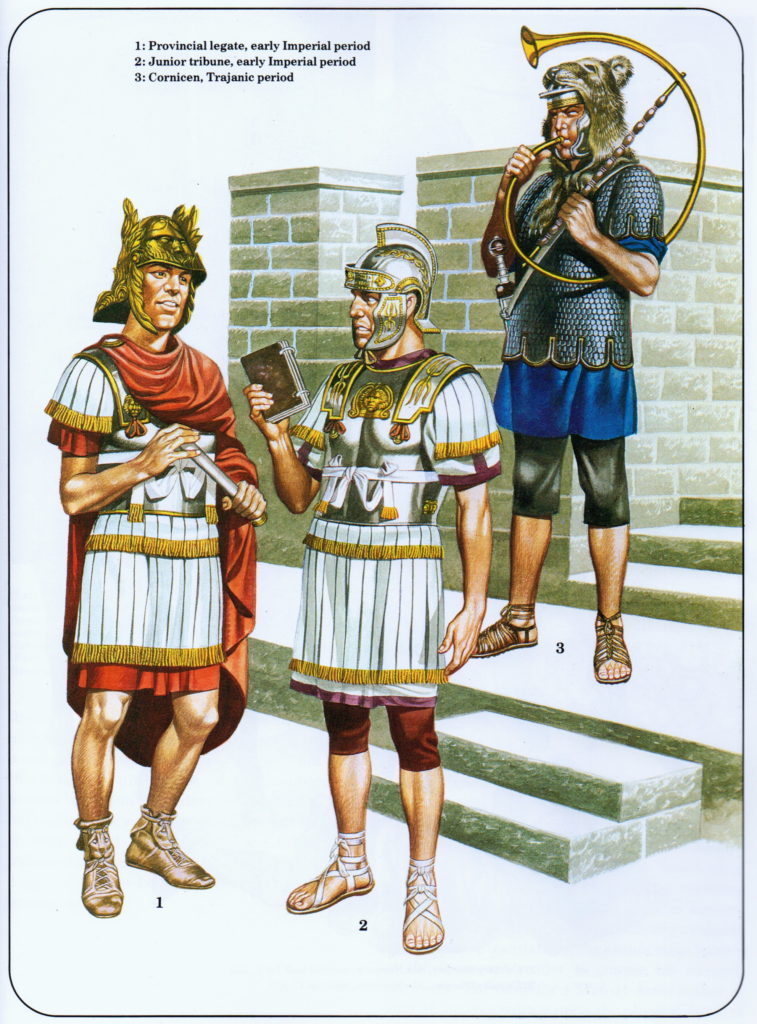
Officers of the Imperial Roman Legions (illustration by Ron Embleton)
Finally, there were ten cohorts in a legion which brought the average number of troops in the imperial legion to 5000.
The commander or general of an entire legion was known as the legatus legionis, or legate commander. This person was usually a senator, just like the patrician tribune who was his second-in-command. The third person of overall authority in the legion was the camp prefect, or praefectus castrorum. The latter was often a career soldier, perhaps a former centurion who had been promoted, and was responsible for much of the legion’s administration and logistics.
There were many other minor positions within the legions such as duplicarii, men who received double pay for skills such as engineering, or the building of siege equipment, as well as benificari, those who were aides to the legate or other officers, and who were excused for intense labour such as the digging of ditches and erecting palisades.
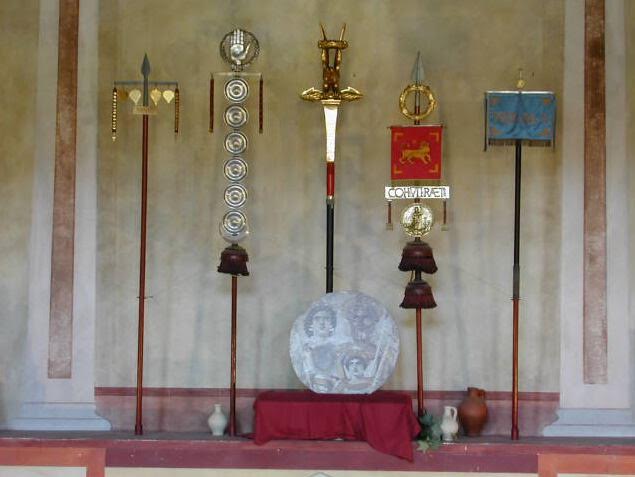
Roman legionary standards with an image of Emperor Severus and his family
We must not forget the standard bearers who made up the imperial legion. These included the vexillarius, the person who carried the vexillum standard of each unit, the signifer, the soldier who carried a century’s standard and wore a wolf or other pelt over his helmet. There was the cornicen, the trooper who carried the cornu, the round horn used to rally the troops and give commands, as well as the imaginifer of the legion, the trooper whose task it was to carry the image of the emperor before the legion.
Probably the most important standard bearer was the aquilifer, the man whose solemn duty it was to carry the legion’s golden eagle, the aquila, into battle. This man was to protect the legion’s eagle at all cost, for it was the ultimate disgrace for a legion to lose its aquila to an enemy.
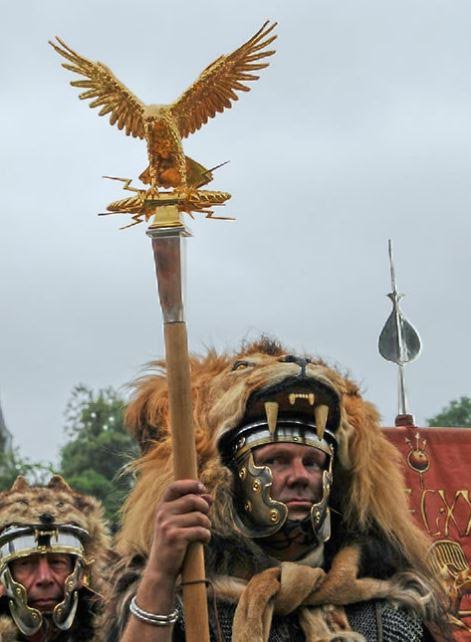
Re-enactor dressed as an Aquilifer
Along with the 5000 regular troops that made up an imperial legion, there were often alae, or auxiliary units, attached to the legion. These were usually units of 120 cavalrymen who acted as scouts and supported the legion on the march. They were often made up of foreign troops who had been brought into the Roman ranks such as Sarmatians, Numidians, or Scythians to name a few.
Ala units might also consist of skirmishers such as Cretan or Balearic slingers, but most often they were cavalry.
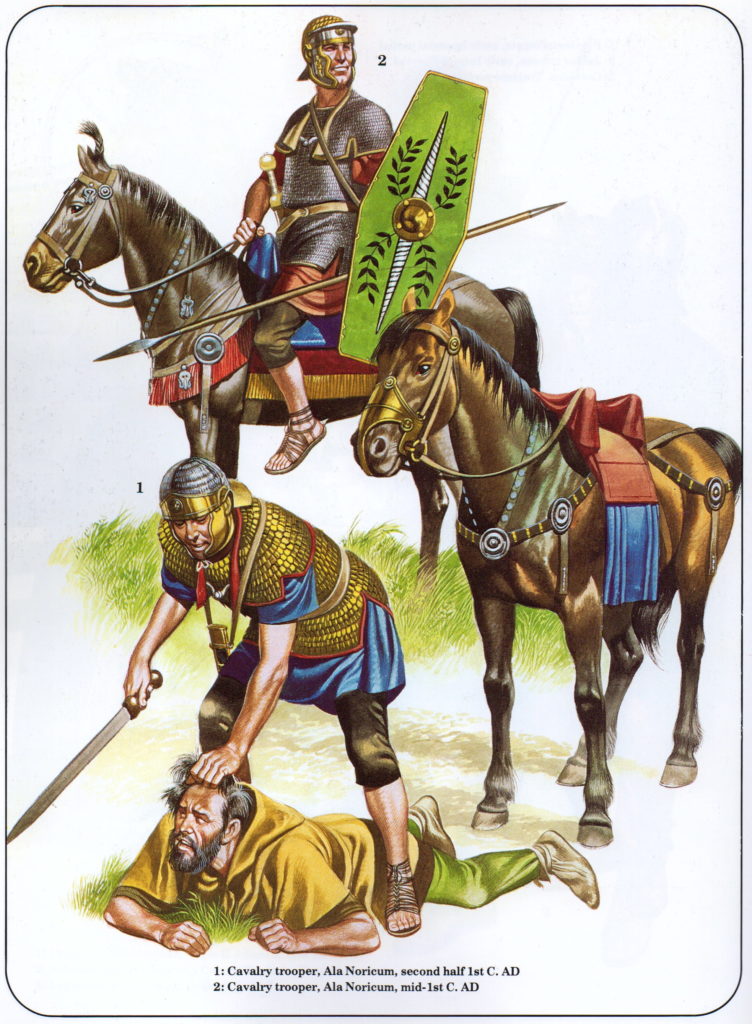
Auxiliary Cavalry troops (illustration by Ron Embleton)
The imperial Roman legion was one of the most effective fighting units of the ancient world, and it is no wonder that the Empire covered so much of the known world by the time in which A Dragon among the Eagles takes place.
Disciplina, the goddess personification of discipline, was something that was taken very seriously. If a soldier obeyed her and remembered his training, he would survive the direst of circumstances.

Roman coin showing stardard bearers and the world ‘Disciplina’ – second century A.D.
When the legions marched in the field, every night they dug in, every trooper going to his assigned space to dig ditches, pile up ramparts, and raise the palisade around the entire camp.
Tent and command centre, the Principia and Praetorium, tribunes’ tents, stables etc. were always in the same position, the streets set out in the same grid every time. So, whatever happened, a Roman soldier knew where he was, and what he had to do.
Every morning, when they would break camp, they would take down the work of the previous evening, which they had done after a twenty mile march, so that the enemy could not make use of their fortifications.
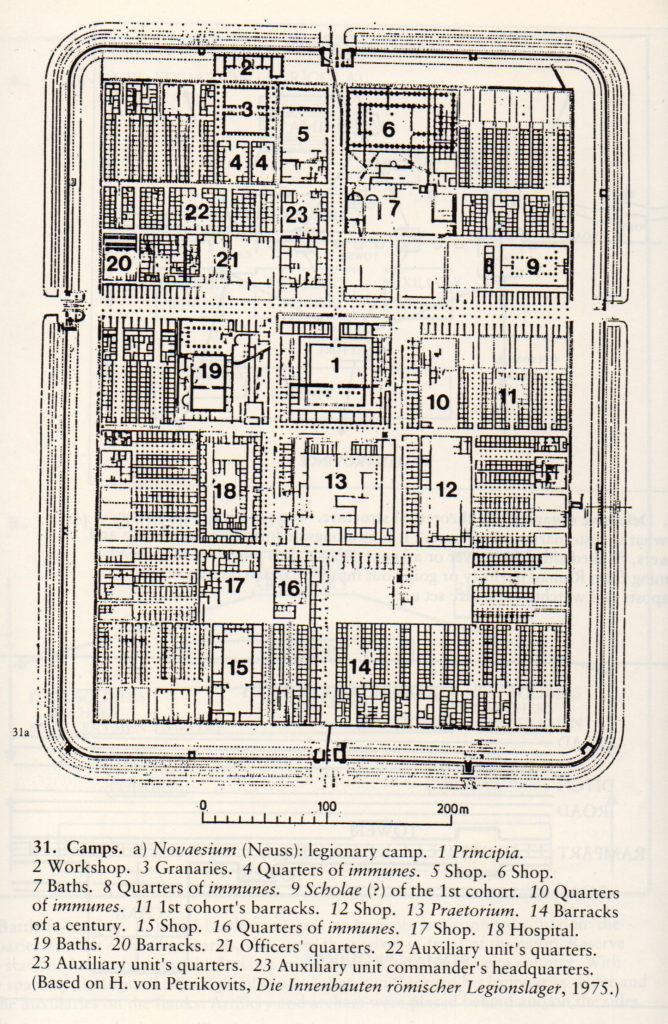
Plan of a typical legionary fortress (from The Imperial Roman Army by Yann Le Bohec)
It was hard work, but the imperial legion gave opportunity to the poorer classes of Roman citizens and allowed them to make something of themselves, if not at least be clothed and fed at the state’s expense.
In return, the men of the legions bled for Rome as they extended her borders into the world.
A Dragon among the Eagles takes place during the Severan invasion of the Parthian Empire, one of the biggest thorns in Rome’s side for over two hundred years.
In A.D. 197, Septimius Severus set out with one of the largest invasion forces in Rome’s history, made up of a titanic 33 legions.
The stage was set for one of the greatest military campaigns in Rome’s history.
In the next post, we’ll look at this powerful enemy and the tactics they used in battle against the legions.
Until then, check out this great video that illustrates the make-up of the Roman legion.
Thank you for reading!
https://www.youtube.com/watch?v=wCBNxJYvNsY

